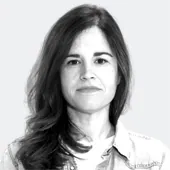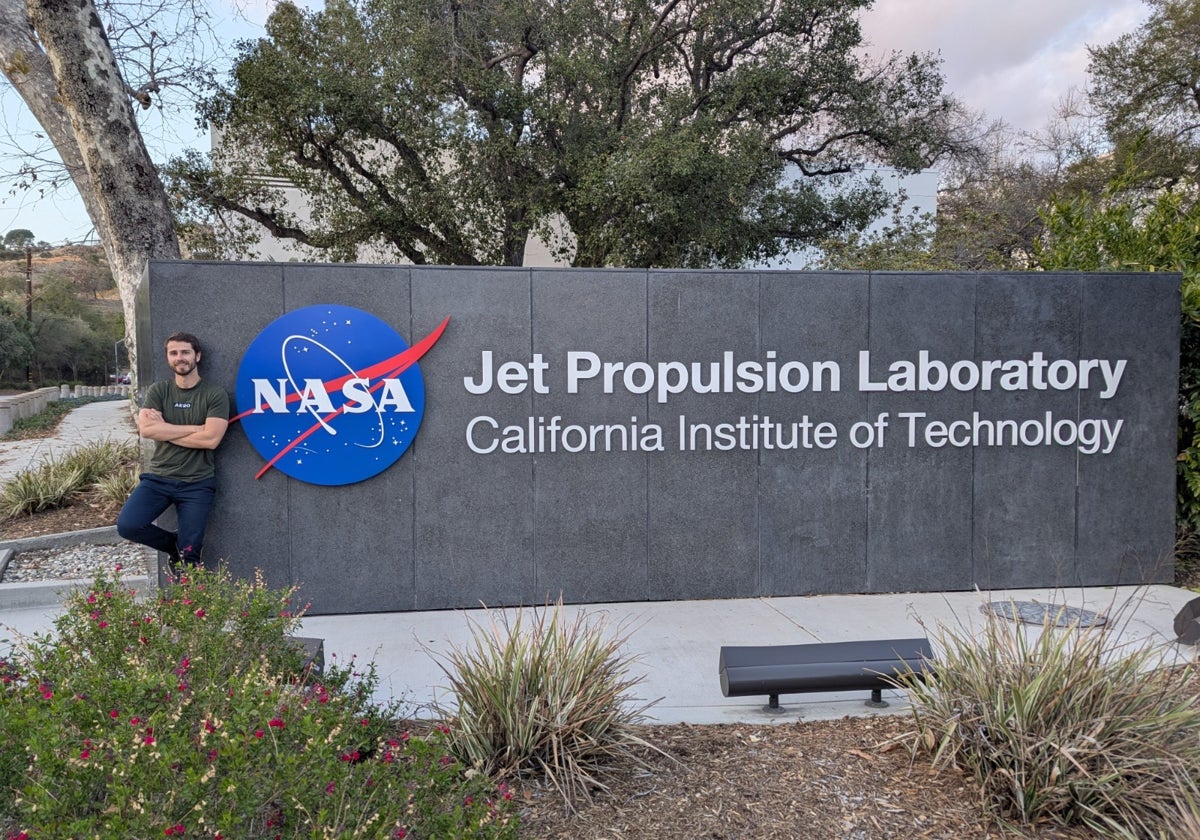From university in Malaga to Nasa in the States: 'My childhood dream has come true'
Federico Lozano, a PhD student at the UMA, is on a research stay at a centre owned by the American space agency to work on optimising the lunar rovers' communications with artificial intelligence
"Dare mighty things" is the motto of the Jet Propulsion Laboratory in the United States of America, known by its acronym JPL.
It is a Nasa-owned centre run by Caltech, the prestigious Californian university specialising in science and engineering, that is dedicated to the construction and operation of robotic space vehicles. Founded in 1930, it boasts of having developed the first US scientific satellite in Earth orbit and having created the first successful interplanetary spacecraft. JPL's work includes the Perseverance Mars rover, the Ingenuity Mars helicopter, the Curiosity Mars rover, the Mars Reconnaissance Orbiter and the Juno spacecraft deployed to orbit Jupiter. Fans of the Big Bang Theory TV comedy series will also identify it as the workplace of Howard Wolowitz, one of its main characters. Putting it bluntly, it is one of those mythical places that space enthusiasts aspire to visit or even dare to dream of working there. "A childhood dream" that has come true for one young man from Malaga: Federico Lozano, a telecommunications engineer and PhD student at the University of Malaga (UMA), who has been on a research stay at the JPL since the end of January.
"My research will focus on optimising lunar rover communications using machine learning techniques, with the aim of supporting future planetary and lunar exploration missions," explains Lozano. At the UMA Lozano is working on improving satellite communications using artificial intelligence (AI) within the SatCom research group led by Dr Beatriz Soret. Instead of satellites, at Nasa he is working with robotic vehicles, but it is still about "communications in space" and they are "similar scenarios". "It makes sense to integrate what I'm doing there with what I'm doing here," says Lozano, who describes the experience as "mind-blowing". "It's like bringing a bunch of restless brains together in the same place: it's a super-stimulating environment - the team I'm working with is sending robots to the moon," said the 26-year-old researcher, who lives in a house shared with other Caltech and Nasa interns.
JPL has more than 5,500 employees and 600 interns pass through every year. There are very few from Spain: "There are only two of us doing internships right now, as far as I know: a young woman from Madrid and me. On the other hand, there are a lot of Swiss." Lozano hopes that his stay there will serve to open the way for a "medium- and long-term collaboration between the UMA and JPL." "I had to make my own way to come, but hopefully in the future it will be easier for other students."
Paving the way
The young man from Malaga has not had it easy to get to Nasa. It has been a tortuous path that he has carved for himself, using the same entrepreneurial spirit that led him to create a startup company (Blueberry ) at the age of 22 with the UMA. "The normal thing to do when you are doing a doctorate and you are about to do a stay abroad is to ask your thesis supervisor for contacts and knock on the door of universities with which you already have a previous relationship. I have the FPI grant, which finances a stay, but it doesn't allow you to go to the United States. I didn't want to settle for that, so I applied for the IMFAHE scholarship. I was selected and the organisation itself encouraged me to aspire to the top, to the place I dreamed of going to," said Federico Lozano. He then confessed that Nasa was not his first choice: that was MIT. When he had no response from MIT, he set his sights on the space agency and was surprised at how "open they are to receiving interns." The key was to find a researcher working in the same field as him: applying AI to improve communications in space. "Once the key person was found, everything fell into place, even though it's a lot of paperwork."
Lozano has now been at JPL for six weeks and has already become used to spending every day next to what they call "the centre of the universe", the operations centre from where the robotic vehicles that JPL has scattered around space are controlled. They include the Mars and Moon rovers and the Voyager probes, which are the most distant objects made by humankind currently out there in space. "It's the typical room we imagine when we think of Nasa, with lots of monitors. And it does have a plaque that says 'Centre of the universe'," he added.
Comparisons between Nasa and the UMA when it comes to material resources are, unfortunately, quite shameful. Lozano summed it up: "Our shortcomings are material, not knowledge. We know what the economic situation of the UMA is, and that limits us a lot when it comes to obtaining resources, equipment... All in all, I'm lucky; in my group we can't complain. But of course, this is another level."
The research stay that this telecoms geek from Malaga is enjoying right now will last just over four months, although he is already looking for a way to extend his experience at Nasa. He has applied to the Fulbright scholarship programme to do another six-month stay. Now that he has fulfilled his childhood dream, he is even more motivated to fulfil his professional dreams: "I would love to have a rover to the moon with my code on it. And in the longer term, what I really want is to go into business again, this time into something related to space."

